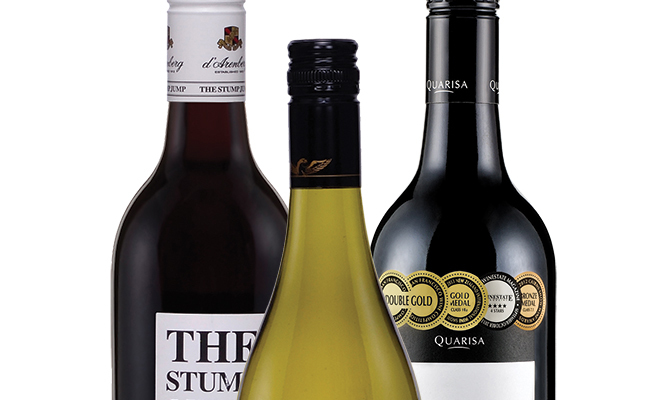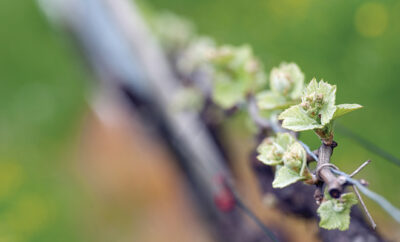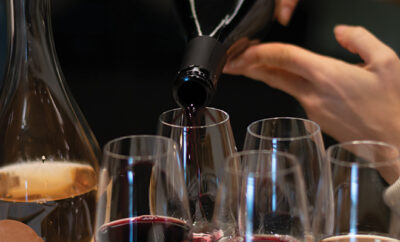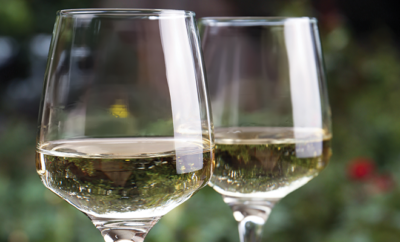
Wines From Down Under
Australia! The land Down Under may conjure images of knife-wielding Crocodile Dundee, vegemite sandwiches and Top 40 songs of the ’80s by Men at Work, but there’s much more to explore and appreciate from the fourth-largest exporter of wine products.
In the sense of spirit and practice, Australia emerges as a cowboy in the fields of tourism, coffee, cuisine and wine. Creating and sustaining growth in niche markets requires a bit of cowboy enthusiasm, bucking the methods of others and making it work to Australia’s advantage. The influence of British, Chinese and Mediterranean cultures in Australia has created a delicious bounty of flavors, spices and selection in nearly every region, and this applies to food and wine alike.
Many of my favorite Australian wines are produced in the southern parts of the country, where the climate is cooler with a moist influence. In addition to Australia’s sheer magnificence and beauty, what’s fascinating is how the diversity of soil types and climates in each unique terroir presents and influences wine varietals that are also found here in the United States. Same grape varietals plus different terroirs equals variety, which is the spice of life.
No matter your preference, Australia offers Riesling, Chardonnay, Sauvignon Blanc, Chenin Blanc as well as less commonly known Semillon and Verdelho, which are delightful and crisp white wines that offer fruit without sweetness. Prefer red wine? There’s plenty to appreciate in Australia’s Cabernet Sauvignon, Pinot Noir, Malbec and Shiraz. From the Margaret River, which is tempered by the Indian Ocean, to the Swan District as the warmest area, each of the eight agricultural viticulture areas has distinct and unique contributing soil, elevation and rainfall factors that create some pretty amazing wine.
We often think of Australia’s wines as the sweet and often fortified wines so prevalent in the 1970s. But vintners studied the wine consumer market and made great strides in producing the quality products we enjoy today. With the heritage of immigrants from Europe and beyond, generations of Australian vintners have perfected their wine offerings and distribution throughout the world. One of these successes is Shiraz. James Busby, 1801–1871, is revered as the father of the Australian wine industry. According to Busby, syrah grapevines were brought to France in 1833 and were thought to originate in the chilly Iranian town of Shiraz, where Shirazi wine was enjoyed and well respected throughout Europe for more than a thousand years. Australian winegrowers began cultivating this dark, thickly skinned Persian wine grape and a successful legacy of shiraz was born. Although syrah and shiraz share DNA, they are generally viewed as separate varietals with unique interpretations handcrafted by the specific winemaker, who will play with the natural tart tannins and berry-like fruit on the palate to create either a lighter fruit-forward wine or a heavier smoky-rich wine. Try either with a traditional Lamington dessert of chocolate-soaked sponge cake with coconut and you have the makings of a home-based Aussie adventure.
In price, Australian wines vary from under $10 up to $75. Australian wines were value priced a decade ago due to supply and demand. In the 1980s the abundance of Australian grapes on the market created more shelf product than was consumed or exported, so much so that the government sponsored a vine pull to help curb the volume of fruit. Currently one can find high-quality Australian wine in the local supermarket with tasting profiles that compare to California red wine blends for around $20.
But what about those twist-offs? Don’t be afraid of the screw cap enclosure for your Australian or New Zealand wine. You can safely store an opened bottle in your fridge, and the twist-off is perfect for picnics. Although wine experts go back and forth on this subject, the twist-off enclosure economically seals the wine extremely well from air contact. On the other hand, some experts believe the wines need a bit of breathing via the natural cork, even microscopically. The romance of pulling the cork is often part of wine enjoyment; however, sometimes that cork isn’t 100 percent natural and may contain part or all synthetic material.
Does the screw-cap cheapen the wine or lessen the quality? Perception is everything. Marketing efforts are slowly softening the wine consumer’s perception of screw caps; however, restaurant sommeliers, wine directors and most winemakers maintain their adherence to the qualities of natural cork enclosures. When you purchase that special wine for your anniversary or your boss, the screw cap still affects perception. Generally, though, I’d suggest not letting the screw cap enclosure determine your everyday wine purchase. Instead, consider whether you’re going to enjoy this bottle now or in the next 6 to 12 months. If you plan on laying it down for a year or more to age, do so with a classic natural cork enclosure. Otherwise, twist it off! HLM
Sources: alldownunder.com, australia.com and teara.govt.nz.







